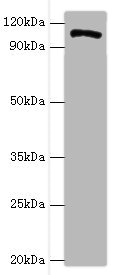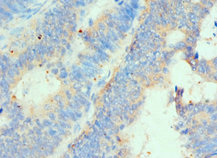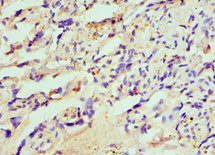Full Product Name
Rabbit anti-Homo sapiens (Human) HIP1 Polyclonal antibody
Alternative Names
2610109B09Rik antibody; A930014B11Rik antibody; E130315I21Rik antibody; HIP 1 antibody; HIP I antibody; HIP-1 antibody; HIP-I antibody; hip1 antibody; HIP1/PDGFRB fusion gene antibody; HIP1/PDGFRB fusion gene, included antibody; HIP1_HUMAN antibody; HIPI antibody; Huntingtin interacting protein 1 antibody; Huntingtin Interacting Protein HIP1 antibody; Huntingtin-interacting protein 1 antibody; Huntingtin-interacting protein I antibody; ILWEQ antibody; KIAA4113 antibody; MGC126506 antibody; MGC27616 antibody; mKIAA4113 antibody
Immunogen
Recombinant Human Huntingtin-interacting protein 1 protein (410-690AA)
Immunogen Species
Homo sapiens (Human)
Purification Method
Antigen Affinity purified
Concentration
It differs from different batches. Please contact us to confirm it.
Buffer
PBS with 0.02% sodium azide, 50% glycerol, pH7.3.
Tested Applications
ELISA, WB, IHC
Recommended Dilution
| Application |
Recommended Dilution |
| WB |
1:200-1:1000 |
| IHC |
1:20-1:200 |
Storage
Upon receipt, store at -20°C or -80°C. Avoid repeated freeze.
Lead Time
Basically, we can dispatch the products out in 1-3 working days after receiving your orders. Delivery time maybe differs from different purchasing way or location, please kindly consult your local distributors for specific delivery time.
Usage
For Research Use Only. Not for use in diagnostic or therapeutic procedures.






